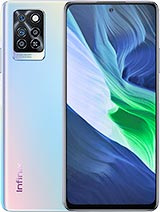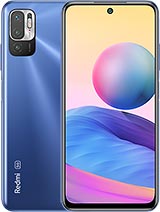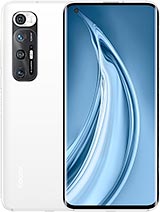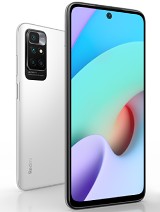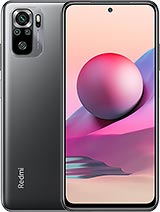Redmi Note 10S Unboxing & Redmi Note 10 5G Unboxing. PLUS Camera Comparison! By TechTablets
Wow, we've got so many models, haven't we of the Redmi Note and the other Xiaomi phones. Well, this is the note 10 s and the note 5g. So obviously one of them has 5g. This is powered by the dimension 700. This is powered here by the hello g95, so very different chipsets. Both of them have the same 5 000 William hour battery capacity, but different charge rates, 18 watts versus 33 watts, different cameras as well, so 64 megapixel main camera.
This is a 48 megapixel main camera, the front facing cameras, 8 and 13. So note, 10 s and the 10 5g here I'll. Take a look at the note, 10 5g first unbox that one we've got a case right here. So that's good they're, including still the CPU cases, it'll be one of those clear ones and there's an instruction manual there, which is a quick start guide. Okay, we've got a sim tool which is on the back of that as well, and the safety information warranty card.
What not and the normal typical cases we get from them. So the phone this one here has the MediaTek density 700, the 90 hertz 6.5-inch screen with the front facing cut out little dot camera there, 48 megapixel camera and the 5 000 William hour battery 18 watt fast charging that one and let's take a look here at the note, 10 s. So the note 10 s, this one has the AMOLED screen: okay, but it's 60 hertz. So you wanted the better refresh rate. Then you would get the other one.
There also powered by mediate kit's the hello g95 as the 33 watt, fast charging same capacity, the 5 000 William hours and a 64 megapixel camera with this one. In this compartment here of the 10s, we have another CPU case that a bit of paperwork there and everything the warranty user quick start guide. So I won't show you that again- and this is the size of the charger. So it doesn't look too bad. There type an USB charging, of course, and the euro plug and then the standard typical USB cable that we get from Xiaomi of a reasonably good length.
It's quite a long one, and normally the quality of the cables is decent. Then the charger of the note 10 5g, which is a little smaller, and this one is 18 watts. No 5g take a look at the builder this one first, so we have a plastic back on it, and you can see they're going with this two-tone style. So it's darker down here at the bottom and slightly lighter at the top, and it doesn't actually feel too bad. So the camera does protrude a little here, and we do have a plastic frame.
I can see clearly all around the outside, so plastic frame with these and that's to be expected. The price point side fingerprint reader. Now I do find these capacitive always on ones, do work quite well: plastic volume up and down buttons and right up here at the top you can see: we've got loudspeaker IR transmitter and a 3.5 millimeter, headphone jack and down the bottom type c loudspeaker and the mic beacon. Oh, you can actually see one antenna line there just a little, but overall, that doesn't actually feel too bad so that I will power that on shortly, but have a look here at now. The note 10 s, which is a slightly more expensive model, has the AMOLED and the 64 megapixel main camera.
So both of these phones have the 2 megapixel by the way, which I kind of call well sticker cameras. A lot of us call them that, because they don't really do too much so one for depth and there will be another one there used for macros and that's the main camera right there. This one has the ultra-wide. We don't get an ultra-wide with the note 10 5g dual tone led flash. So this has again, I believe, that's plastic.
Well, it feels like a glass, but now that's that's a plastic finish to the rear of it around the side. Same side, fingerprint reader, although it looks a little different volume up and down there right down the bottom type c, port loudspeaker microphone and the 3.5 is on the bottom of this particular model. Right here. Some trade tools on both of them they are on the upper left, as you can see, and I'll probably take a quick peek at that to see what they actually do support so loudspeaker port IR transmitter and microphone. There too, with this one so feels okay, and I definitely think that that is plastic.
Two on the back, so both of the front screens on these, they are using gorilla, glass, three and just take a look at the difference in our weight now. So this is the note 10 5g and that is 192 grams. According to my scales, of course, official specs will probably be a little less and 181 on the note, 10 s and looking at the thickness of them. So the note 10 5g is a little thicker. It is about nine millimeters that I'm measuring versus 8.5 millimeters of the 10s, so the 10s looks a little slimmer here because of the glossy finish to it, but as I flip it around, and we have a look at the rear of them, you can see that the matte finish of the 5g model does tend to pick up a few more fingerprints and smudges, but for the price that these phones sell, for both of them do have a very solid and a good feeling build quality. But yes, they are all plastic, the frames around them, and they do have that gorilla glass 3, as mentioned, obviously with the note 10 5g.
It has, of course, the 5g support, and we'll take two sims, as you can see, two NATO sims and a micro SD card metal, reinforcing there's a rubber gasket around this to keep out dust and a little of splash resistance there so can run both of those 5g sims at the same time. So it's a proper 5g dual, and here we have with the 10s different setup. So you can run the two sims and the micro SD card, which is perfect, because both of these models only have 64 gigabytes of storage, and I'm going to need the micro SD card, definitely to stall a lot of different apps and things again. We've got the gasket around the outside of this, so I've gone through all that boring setup parts, and I won't show you any of that of course, and most people know what that's all about you go for your typical setup, and here we are first up looking at our default apps that are installed. So I've gone with the app drawer mode here with my UI.
This has 12.5 out of the box, and this has 12.0.4. I think it is I'll. Take a quick look at that, so you can see there's a lot of bloatware on here. Normally Xiaomi has up to 20 apps and about 2 gigabytes on their entry-level devices on the flagships. They do tone on this tone down a little on it and very easy to go in and simply uninstall those apps.
But I still like to mention that I do that with all brands, because I don't think they need to cram so much on there, so fingerprint readers side on those- and I haven't actually set that up yet so that will be in the full review. I will test that out. Okay, so we'll take a look at the version here on both of these. So yes, we're looking at 2.01, and I've just connected up to wireless on both of them, and there are no firmware updates. So I'm up-to-date here so this model actually sorry, I said before it had 64.
I got 64 gigabytes on this one and 120 so a little confusing there uh, because they're so similar these phones in different ways, but then they have a lot of differences with the chipsets on them being one of them, the dimensions, 700s and then, of course, the hello g95 with these all right. So I've noticed already that, because it's 60 hertz on this one, it does not feel quite as smooth and fluid the UI you're going to get that and out of the box. It's 60 hertz by default on this, and I've noticed it just things do feel a lot smoother. Definitely here with the note 5g 10 5g and of course you can see all the bloatware there. So taking a quick look at the screen, see I'll go into my typical depth once I get these, and I'll show you just what you can expect with these screens.
So when you look at this one, the colors don't shift out that much it's AMOLED uniform color and the brightness is around 450 nits. With this model, sorry 400 nets and the IPS one. This brightness will actually be a little better about 450 but IPS. So when you do move it, you can see the colors. It shifts out a little more when taking a look at them side by side.
I definitely I would go for the AMOLED screen. It does to me, look quite a bit better, and you get a little tiny bit of the dimmer pixels here around where the cutout is for the front facing camera that you're going to have with an yips panel and just around the edges, especially with the whites. It's a little noticeable here, but that's me nitpicking, of course, for the price this phone sells, for I don't think too many people are going to be concerned about the IPS. The great thing is, of course, that it does have that 90 hertz, which I'll put it on now dark mode there, and you can configure the color scheme typical kind of setup that you get with all the Xiaomi phones, which I really do like there. So you can adjust this your color saturation, your white balance right there and just tweak that to your own personal preference.
So here we are in the camera app on both of them, so there is going to be a difference in the camera quality here, obviously the 48 megapixel and then the 64 there will be some difference there. The resolution advantage more pixel of the pixel bending and everything, but I wanted to point out that with the video modes on both of these, the 10s is a little superior here for what it can actually do. So we get 4k 30 frames per second maximum, and we get 1080p 30 only on the rear. Here with the note 10 5g, so that's a bit of a difference there. If you shoot a lot of video, and you want the 4k, but this 4k does not have any electronic image stabilization.
It does at 1080p only and that's 1080p on both of these models will have electronic image stabilization and here's just a few samples now that I've shot with the cameras on both of these phones very quick camera comparison side by side here with the rear cameras. So what I've set is the note 10 s to 1080p 30, and that way it has the electronic image stabilization. That weighs exactly the same as the note 10 5g, and we can actually shoot in 60 frames per second on the 10s, but it doesn't have any electronic image. Stabilization 4k does not either, so it shakes all over the place, and I'll give you a sample in the full review. This is just an unboxing first impressions video, so the focus seems to be working quite well on both of them and the stabilization.
It looks alright so far, it's not the best out there. It's certainly not going to be flagship level and the front-facing camera so 8 megapixels versus 13. Is there a bit of a difference right here and they both have electronic image stabilization, which is good to see the crop is rather close. So that's my arm fully extended out, so it's not too bad, but I would rather have this crop. I mean I would have it with the electronic image stabilization that we get because it means this footage is at least usable, not shaking all over the place.
So how is it handling the changes here with the sun and the exposure shifting out on both of them here? What I'm looking at it looks very, very similar, but let me know in the comments: do you think there is a clear advantage on the more expensive 10s or is the footage on the 105g? Is it still good enough? This is a front-facing selfie. So I look like a bit of a zombie on the 5g model. I prefer the 10s here and looking at my cat Vera, she was not happy. Let me in I think, the shot on the 10s is a little better, more detailed there and this portrait of my daughter, the 10s, I think, but the colors are a little off as well. I don't particularly like them and indoors again, I think.
Well, it's close here they're, both about the same and the scenery shot a little more detail coming through on the tennis again and lastly, here the low-light performance both of them not great but slightly better. On the note 10s and let's have a look at the internal storage now and just an tutu after this, you can see there's a big difference, so both of them have UFS 2.2, spec, okay, but we've got the 64 gigabytes here and then 128, and this one has that density, 700 versus the hello g95. Then big, big difference there in those speeds. So what I'll do now is load up, an tutu and test that, just before I do that, I wanted to comment a little on the gestures that I have noticed that they seem to be triggered a little easier on the note 10s for some reason, but it could just be me. I don't know it just seems to be.
The touch works a little fraction bit better there too, so I'll load an tutu at the same exact time here, just find where it is so there we go, and it loaded up looks like it's going to load up fast, faster on the oh. That was almost about the same, so really equal there, so I'll test them both now at the same time, I'll launch them, and we'll see which one starts off. First really very, very similar here, okay they're on the g 95 was a little quicker, so I'll. Let this run now and show you the result and look at the difference here in the results so about 11, 000 10 000 points not a huge difference, but look at the GPUs. Now I did notice and see this difference when it was running that GPU test an tutu.
It looked a lot leggier on the note 10 5g this one was showing it was just a frame rate that was well less half the frame rate of what the 10s here has. So, if you're into your games, and you're looking at both of these phones, I would definitely get the 10s for the gaming performance, the much more powerful potent GPU it has and just a couple other things I wanted to point out. I've noticed that scrolling you'll see that 90 hertz clearly does look a little better, but it's not that much of a difference really it's only when you look at it really hard and if you're not using a 90, hertz or 120 hertz phone. I think the 60 is going to be fine for most people, and I would actually personally go for this one. It's a slightly better screen being the AMOLED.
Now we'll have a listen to the speakers, but what I've done before just doing this is I plugged in and listened to a little of audio through both of the 3.5 millimeter headphone jacks they're very similar, but the g95 powered note.10S does sound a little better to my ears and the loudspeakers will test them out now, and I'll give you a sample, and they're very similar, perhaps using this same hardware there with those speakers, but here they are both of them at 100 volume, all right. So hopefully, this video of these two models here cleared up a little of the confusion. What are the differences? So it's screen chipset charge time cameras, that's really it! So! If you're a gamer out there- and you can be gaming a lot then I would get the 10s. Definitely if you want the best cameras, 10s charge time 10s, you can see where I'm going with this. This is the more expensive model.
Yes, it is superior and the g95 doesn't seem to be too bad of a chipset, so the charge times the battery life, the thermals gaming performance. All my typical in-depth normal review coverage will be coming with both of these, so do stay tuned subscribe for the in-depth reviews, of course, if you're interested- and I will see you back in those videos with a bit of a comparison- maybe in those, or they will probably just get an in-depth individual review, because I have well already compared them now in this video. So thank you so much for watching, and I'll see you in the next one.
Source : TechTablets


